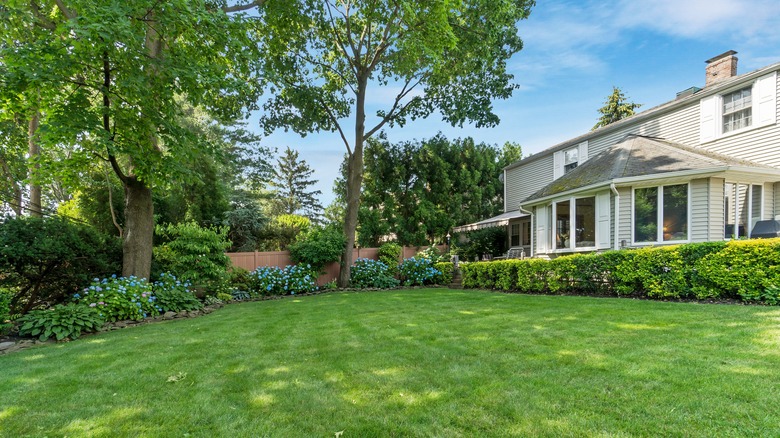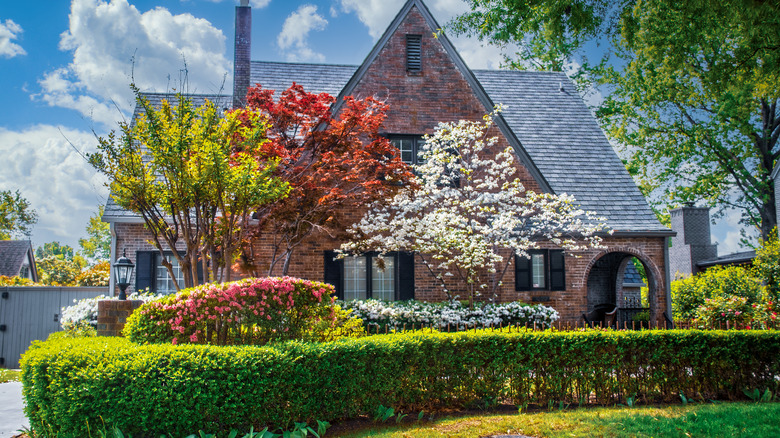Here's The Most Environmentally Friendly Fence Choice For Your Yard
Fences are often a necessity for creating a peaceful and private sanctuary in your backyard. However, as common as they may be, they come with various environmental impacts. In addition to the significant use of energy and materials required to make them, they also disrupt wildlife as many animals must travel in order to find resources and survive. By choosing an environmentally-friendly living fence, you can enjoy the same benefits of traditional fences while actually helping to promote biodiversity in your neighborhood. Simply put, a living fence is a border around your property made entirely of dense shrubs, hedges, bushes, or trees planted close together to create a natural fence line. Unlike traditional fences, a living fence does not deteriorate. In fact, this fence will make your outdoor space even better over time.
There are numerous upsides to planting a living fence around your property. Living fences are incredibly beneficial for the environment as they absorb greenhouse gases, helping to make the air cleaner and combat the effects of climate change. They are very customizable too; you can create a living fence from flower bushes, ornamental garden plants, and evergreen shrubs to make your landscaping look great all year. They provide nourishment for a wide range of important species who will return the favor by helping your garden become more bountiful. However, there are some key elements to consider before you decide if a living fence is right for you.
Benefits and potential drawbacks of living fences
There is no question that a living fence is the most environmentally-conscious way to define the borders of your backyard. No manufactured materials are used in its construction, as it is grown entirely from the ground. No matter which hedges you choose to plant for privacy in your yard, they will contribute positively to the local ecosystem by giving insects, animals, birds, and pollinators additional shelter and sustenance.
Living fences also come with some practical benefits. They are more affordable to install and will last far longer than a man-made fence, which only has an average lifespan of 15 to 20 years. Taller hedges and trees also offer strong protection against wind, which is why you will often see farmland protected by "windbreaks," or rows of tall plants and trees. Strong winds could wreak havoc on your garden by causing branches to break, leaves to tear, and plants to uproot. Living fences also absorb sound and offer excellent noise protection.
Before you decide on one, however, there are a few things to consider. Firstly, it will not provide a solid barrier around your yard, so if you have pets or concerns about security, this option may not put you at ease. Living fences also take up more space, which is important to keep in mind if you have a small backyard. Plus, they require maintenance such as regular trimming, fertilizing, and occasional watering. Unless you enjoy keeping yourself busy with outdoor tasks, you may need to hire a professional service to keep your living fence in good shape.

